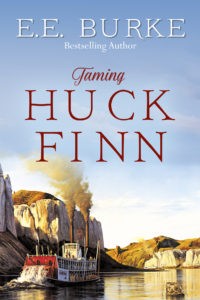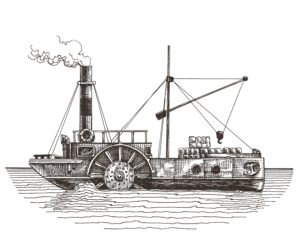One of the greatest challenges and pleasures in self-publishing is partnering with other artists to conceive the book cover. It’s the physical representation of your story, and so it has to be right. For the Steam! Romance and Rails series, I didn’t just want pictures of trains, I wanted images that would capture the passion and drama of a long-ago time and bring it alive.
When I came across a website featuring the photographic art of Matthew Malkiewicz, I knew I’d found perfect fit. His photography visibly defines the era and captures the mood I want to evoke. His trains are featured on eight of my books, and his iconic images are also featured in the banner of my website and on my newsletter.
Contrary to what some might say, authors can’t launch and sustain careers without great partners, such as critique buddies, editors, illustrators, and designers, photographers, to name a few. In this post, I wanted to extend a special thanks to someone who has been a valued partner and friend on the journey, Matthew Malkiewicz.
I’ll let him tell his story in his own words:
How did you get started “shooting” trains?
It was more an awakening than an idea, it all started at the age of 4 months. I have a photo of myself watching a toy train run around the Christmas tree as a baby, it must have hooked me well. As a kid I had a model train layout on a piece of plywood in the basement, and in my teens I received my first camera, which I aimed at every train I saw. After a long period in my life without cameras or trains a job assignment in Colorado (a train mecca) during 2005 rekindled both hobbies, driving me to buy my first digital camera. At the same time I discovered the power of Photoshop, soon after I created my website to showcase my rapidly growing collection of photographs. It’s been a snowball effect ever since.
What are some of your favorite locations or settings?
I concentrate on vintage steam locomotives from all across the United States. Now they have second lives as tourist operations, the fortunate trains that survived the scrapping after the fleet was retired in the middle of the last century. Modern day railroading, both passenger and freight revenue, are pulled by either diesel or electric engines. My passion gravitates to the machines of yesteryear, fire-breathing monsters that seem to be alive whether you have your hand against the polished steel or you are two bluffs away looking across acres of prairie grass. I envision how it must have been back in the day and try to create photographs as timeless as possible to depict what I consider a vibrantly better and sadly vanished time.
What drew you to photographing old steam engines?
The allure of capturing images that stimulate one’s senses is what drew me to photograph steam-powered locomotives. I wanted to bring to life the smells of the coal fueling the engine, the sound of the steam hissing, and the earth rattling as these magnificent machines sit idling or are in motion. These machines of steam are alive. Each is unique, its own personality, which changes from day to day. At a state of rest the locomotive is groaning, sweating, simmering, creaking, spitting. At speed it’s controlled madness – the ground shakes, sound deafening.
What’s the coolest train you’ve ever photographed and why?
Halloween weekend 2011 at the East Broad Top Railroad in Pennsylvania. Nothing, and I mean nothing; can keep me away from capturing that awe-inspiring shot of a majestic steam locomotive. However, the Halloween nor’easter would certainly test my fortitude. The storm produced unusually early season snowfall across the northeastern United States, breaking records for total accumulations. As the morning passed on, the snow intensified. By the time the train made its way out of town for its first run of the day, we had experienced near whiteout conditions and things got real quiet. With a typical steam train, you would expect to hear wheels clacking against the rails and steam puffing from the stack. But to my surprise, the snow seemed to envelop and muffle the familiar sound of the locomotive. As the train bellowed down the snowy rails, it was visible that the pine trees struggled to support the weight of the fresh snow, and the cornfields became covered in a white blanket. The autumn-colored leaves indicated that perhaps the trees were also caught off-guard by the storm. An image from the day, aptly named “Train on a Snow Day”, placed second in the Center for Railroad Photography & Art’s 2014 Awards Program.
Do you enjoy seeing your work interpreted on book covers? Is it how you might have imagined, or completely different?
Yes I do. We all interpret a scene differently, it’s what makes us individuals. I enjoy seeing how others, such as the graphic artist of a book cover, takes my photograph and add their own style, flair, and techniques to enhance. The final results have been beyond my expectations; very pleasantly surprised every time.
Here are some of Matthew’s images on book covers designed by the very talented Erin Dameron-Hill.
What dreams have been realized as a result of your photography?
Throughout life, we all seek our own way in the pursuit of happiness, to find something that’s going to set us apart from the pack, mold our life into something special, and discover the sense in it all. We test different things to determine what will help us in our quest, push us beyond our own limits, and achieve our dreams. My galleries capture my travels and experiences across our countryside. Some near home, others far away and remote, all uniquely memorable. It’s a passion that has taken me to where I am in life today. My hope is that someday my portfolio will be an inspiration to others interested in this hobby I truly love. I’m confident that one day I will capture my most spectacular image. Until then, each photo tells the story of lost time, remembered.
While Matthew continues to pursue his dream of capturing soul-stirring images of an era long past, I continue to pursue my dream to write stories that will transport readers to the past and connect them to the hopes and dreams of others and themselves.
I am incredibly thankful for the opportunity to share them with you, dear reader.
Enjoy a safe and happy Thanksgiving.
With fondness and gratitude,
E.E. Burke
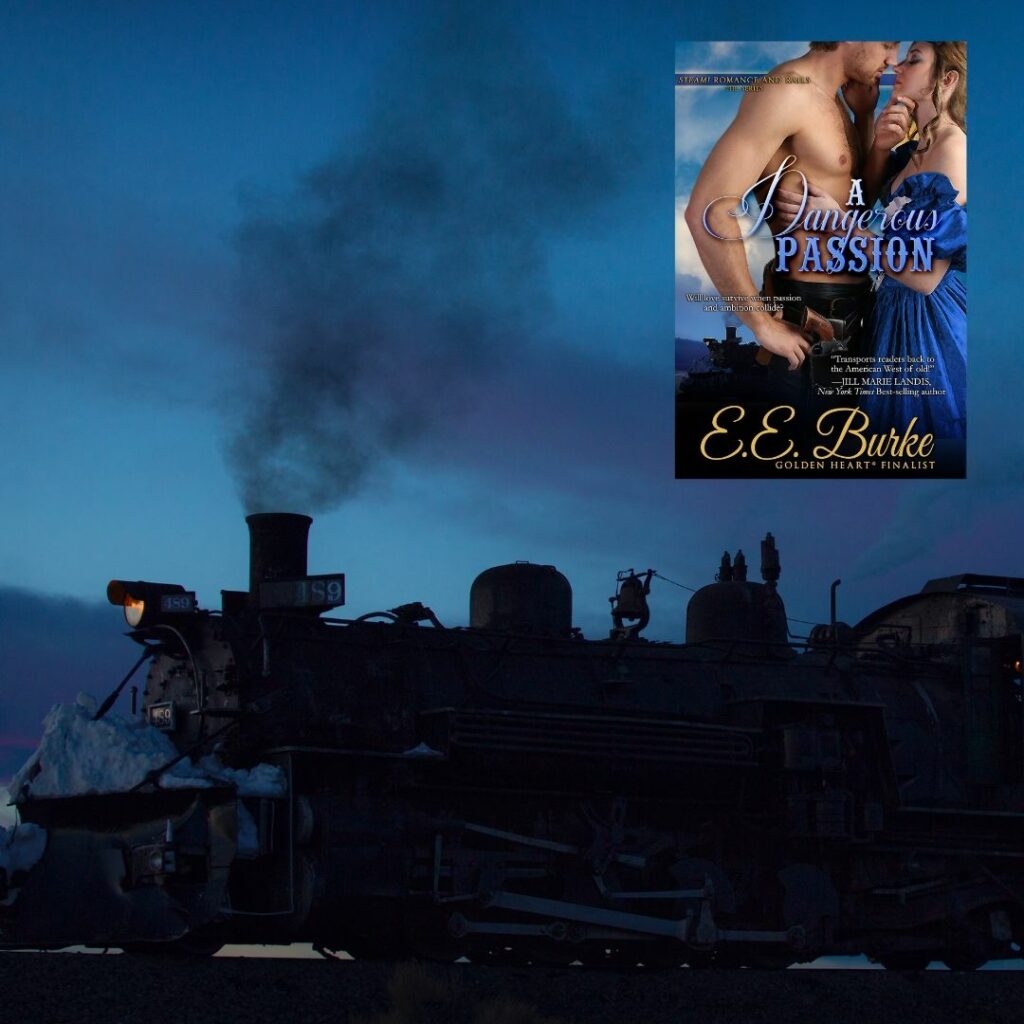

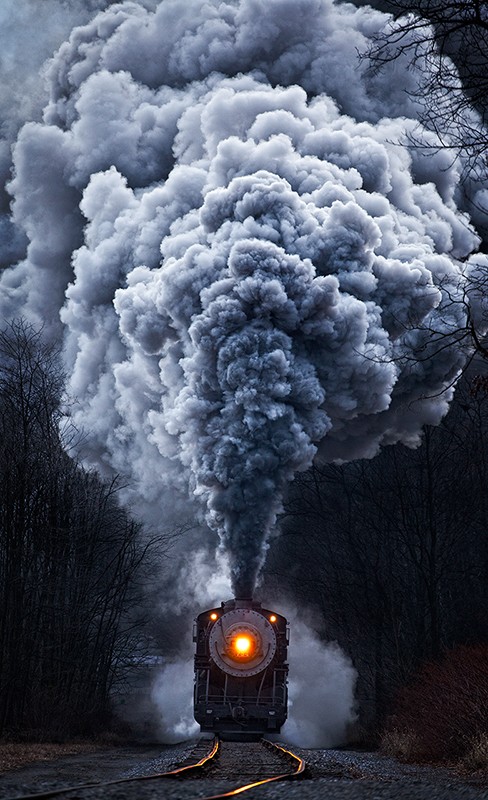


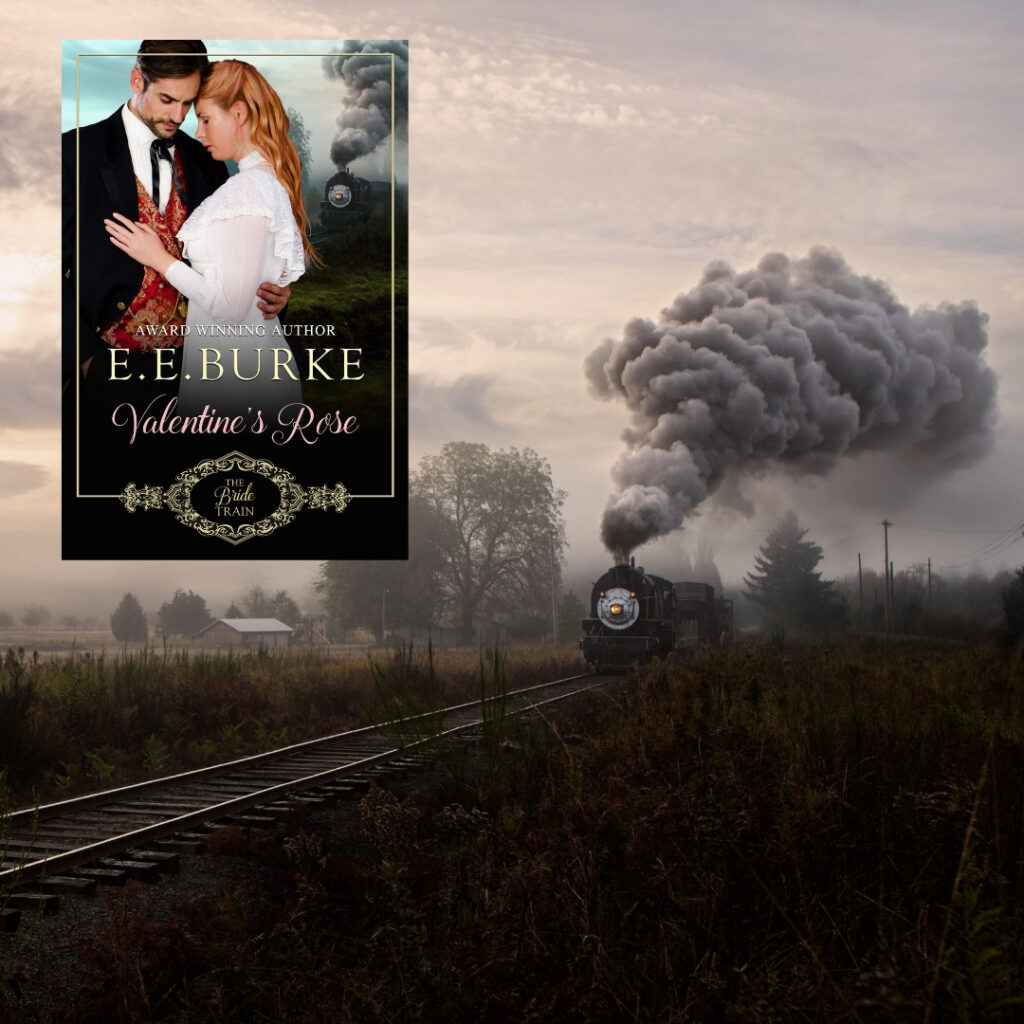
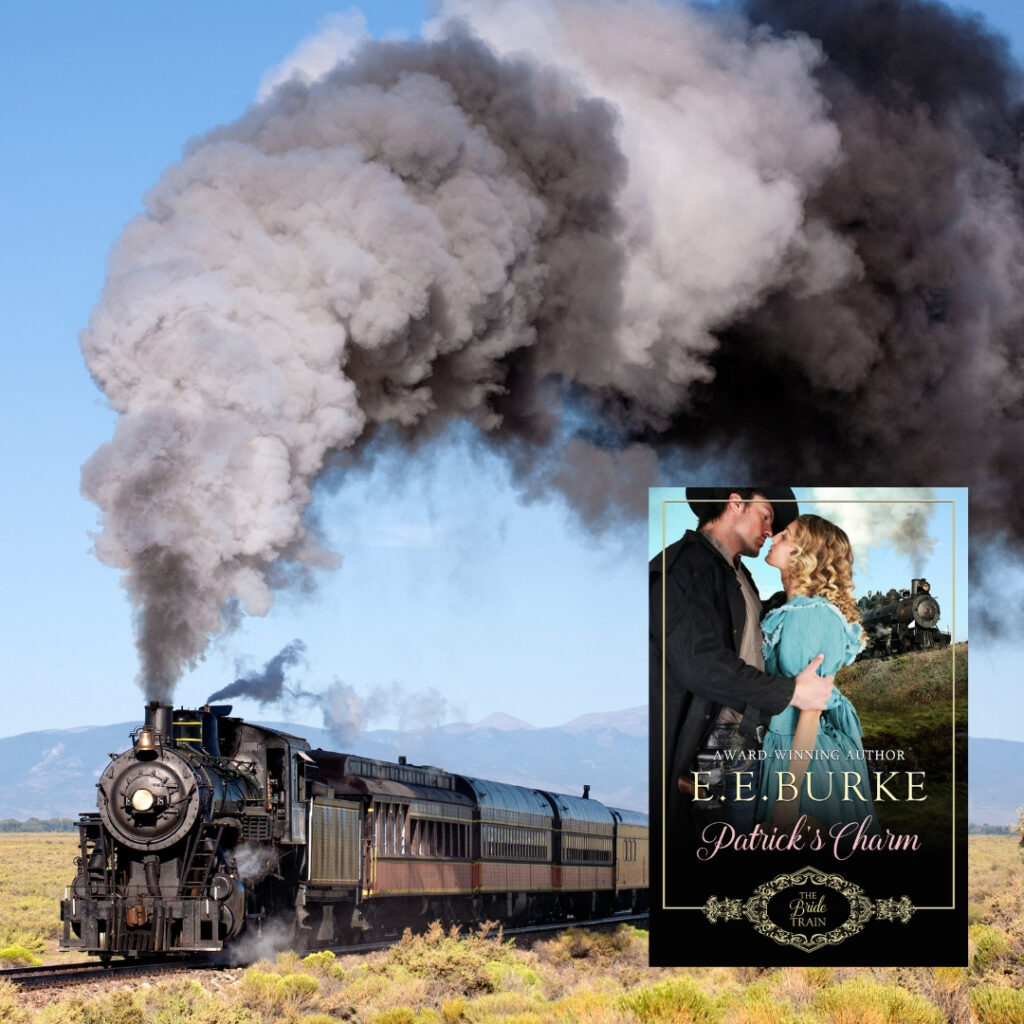
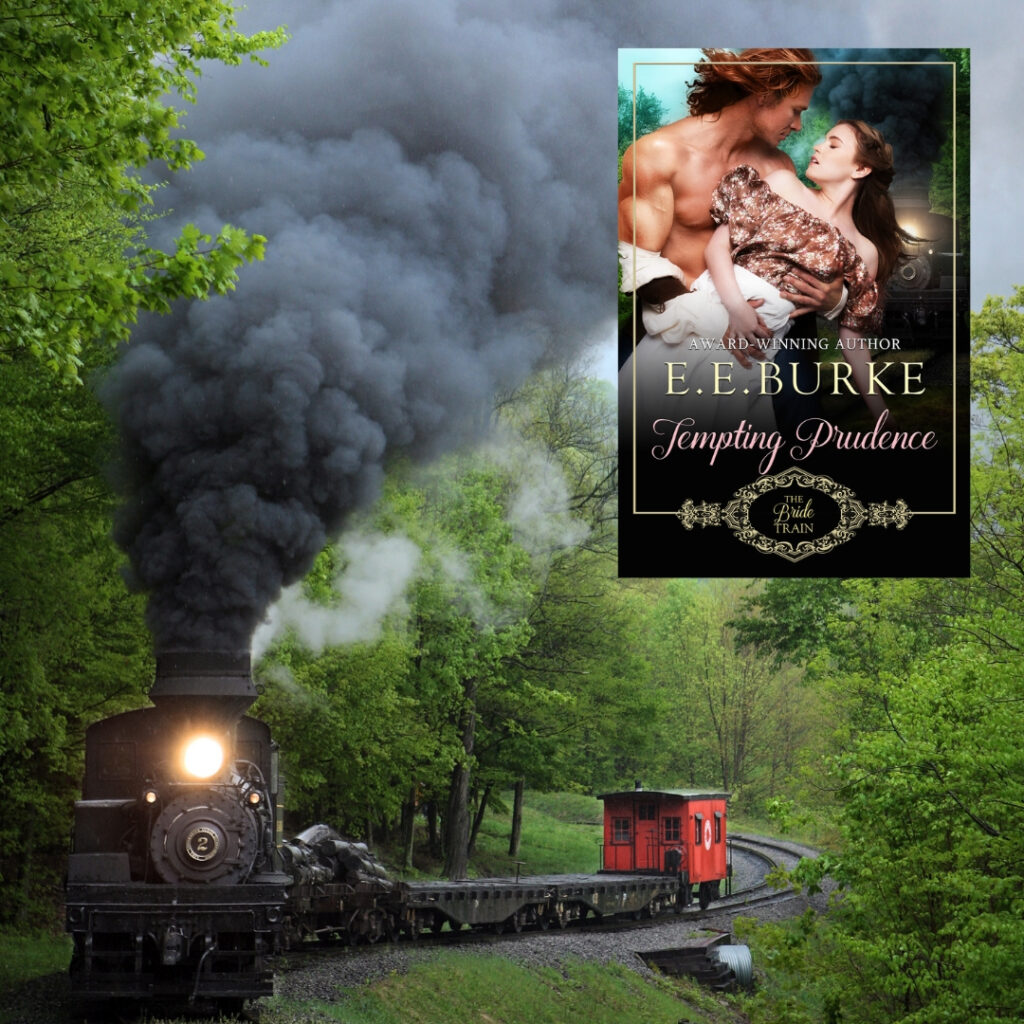
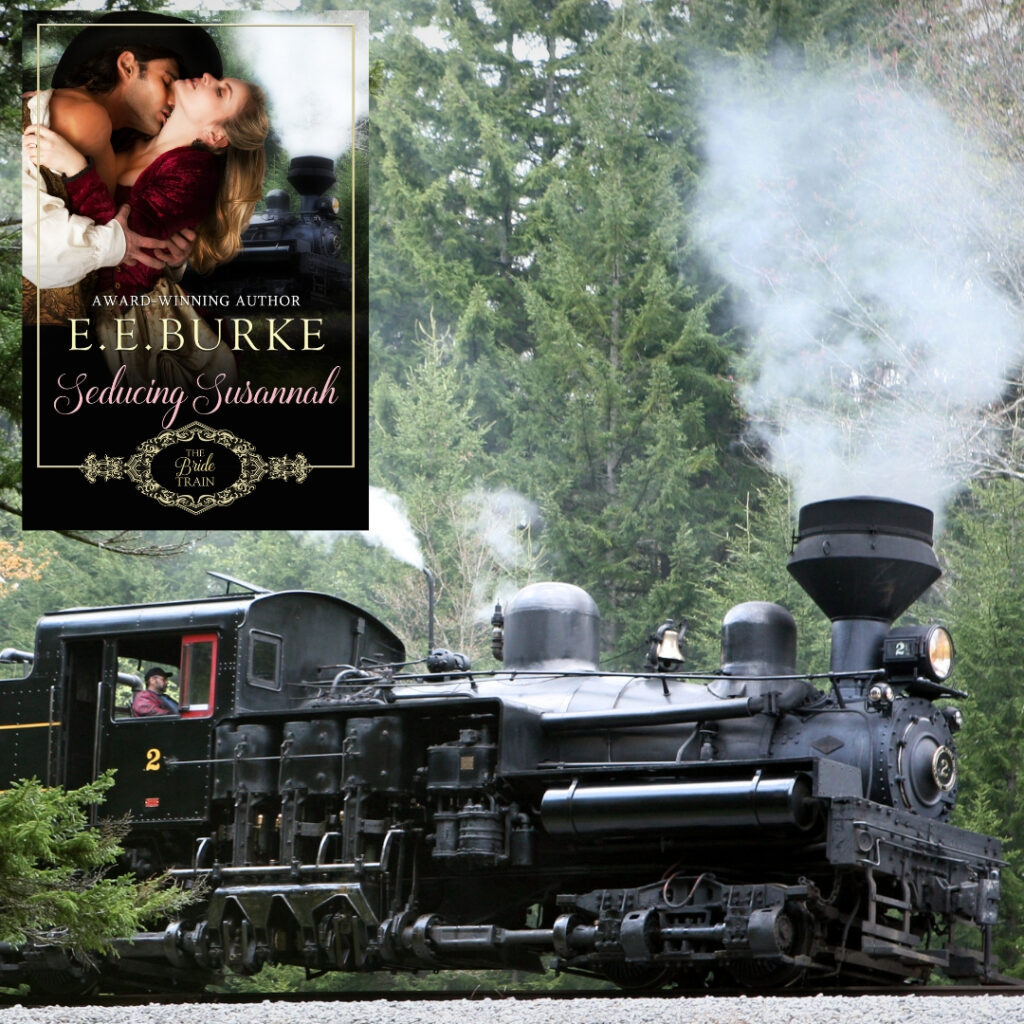

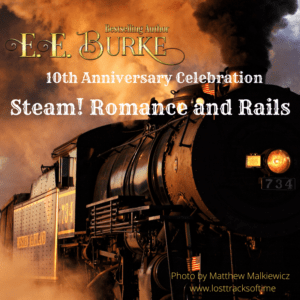 This month, I’m celebrating my 10th anniversary as an author. I’ve always been a history geek, so it seemed natural to combine a passion for the past with my lifelong love for romance, which is how I arrived at historical romance. The potential for subject matter is as vast as humankind, but as I thought about what most piqued my interest, I found myself drawn to a particular period in American history. Something about the story of the railroads called to me. Maybe it was the passion and excitement of that long-ago era when America expanded her boundaries as fast as men could lay track. A little booklet I picked up in a museum ignited an idea, and I started writing what became my first published novel.
This month, I’m celebrating my 10th anniversary as an author. I’ve always been a history geek, so it seemed natural to combine a passion for the past with my lifelong love for romance, which is how I arrived at historical romance. The potential for subject matter is as vast as humankind, but as I thought about what most piqued my interest, I found myself drawn to a particular period in American history. Something about the story of the railroads called to me. Maybe it was the passion and excitement of that long-ago era when America expanded her boundaries as fast as men could lay track. A little booklet I picked up in a museum ignited an idea, and I started writing what became my first published novel.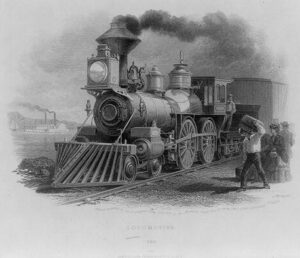 In the second half of the nineteenth century, the United States entered a time of explosive growth and expansion that has been unmatched since. The country had just emerged from a devastating war and its people needed to have faith in something. That something turned out to be what railroads represented: opportunity and hope for the future.
In the second half of the nineteenth century, the United States entered a time of explosive growth and expansion that has been unmatched since. The country had just emerged from a devastating war and its people needed to have faith in something. That something turned out to be what railroads represented: opportunity and hope for the future.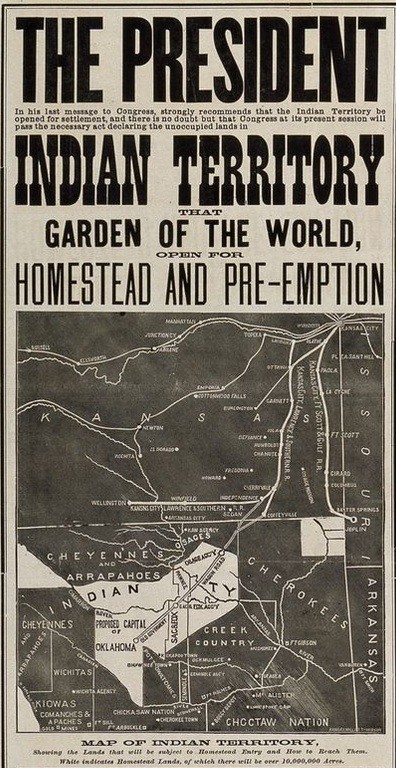 With the Cherokee Treaty of 1866, President Grant establishes a large tract of land in southern Kansas for settlement. Using political pressure, the railroads got the land cheap, less than $1 an acre. That same month, the President signs the Land Grant bill into law, giving first railroad to reach Indian Territory (modern day Oklahoma) exclusive rights to build through the sovereign nations.
With the Cherokee Treaty of 1866, President Grant establishes a large tract of land in southern Kansas for settlement. Using political pressure, the railroads got the land cheap, less than $1 an acre. That same month, the President signs the Land Grant bill into law, giving first railroad to reach Indian Territory (modern day Oklahoma) exclusive rights to build through the sovereign nations.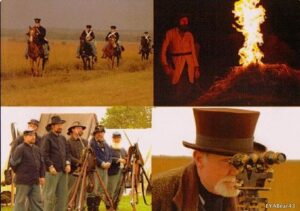 By late 1869, competitive railroads are racing toward a prescribed crossing at the border of Indian Territory. Working for James Joy’s Border Tier line, brilliant engineer Octave Chanute (who gained famed by constructing the first bridge over the Missouri River in Kansas City) draws a straight line south and builds to altitudes of 300 feet, intent on constructing a “first class” railroad.
By late 1869, competitive railroads are racing toward a prescribed crossing at the border of Indian Territory. Working for James Joy’s Border Tier line, brilliant engineer Octave Chanute (who gained famed by constructing the first bridge over the Missouri River in Kansas City) draws a straight line south and builds to altitudes of 300 feet, intent on constructing a “first class” railroad. In January 1870, the stockholders of the Katy Railroad meet in Emporia. Parsons has hired a new general manager who will win the race for him. While the Border Tier builds a railroad that will last, the Katy’s workers lay iron “flat on the prairie” and adjust routes to minimize bridges and curves. They focus on speed, rather than quality. Rumor has it Parsons’ men are stirring up the settlers and encouraging them to riot. The Border Tier strikes back and is accused of vandalism and banditry. Both lines engage in bidding wars for workers.
In January 1870, the stockholders of the Katy Railroad meet in Emporia. Parsons has hired a new general manager who will win the race for him. While the Border Tier builds a railroad that will last, the Katy’s workers lay iron “flat on the prairie” and adjust routes to minimize bridges and curves. They focus on speed, rather than quality. Rumor has it Parsons’ men are stirring up the settlers and encouraging them to riot. The Border Tier strikes back and is accused of vandalism and banditry. Both lines engage in bidding wars for workers.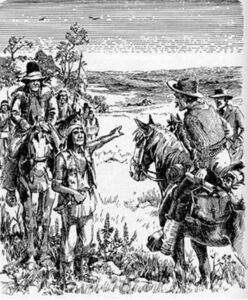 Sneaky competitors hire “fake” Indians to direct Octave Chanute to wrong border crossing, a pile of stones that mark an 1837 survey, which is few miles away from the official 1854 border. While the Border Tier celebrates, the Katy lays track to the correct borderline.
Sneaky competitors hire “fake” Indians to direct Octave Chanute to wrong border crossing, a pile of stones that mark an 1837 survey, which is few miles away from the official 1854 border. While the Border Tier celebrates, the Katy lays track to the correct borderline.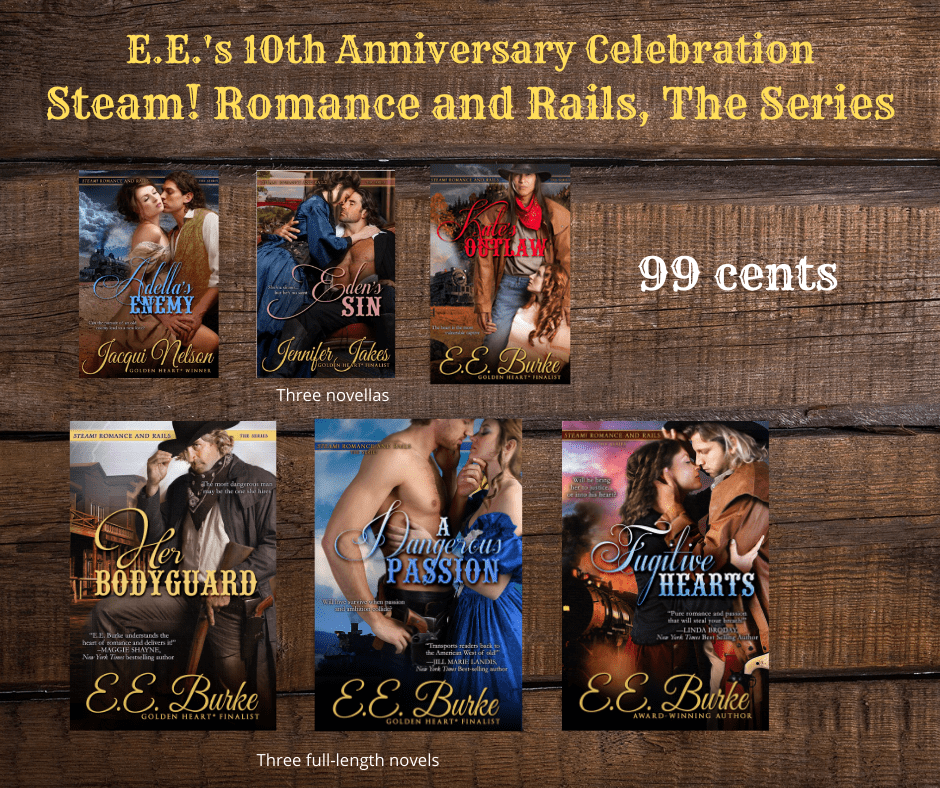
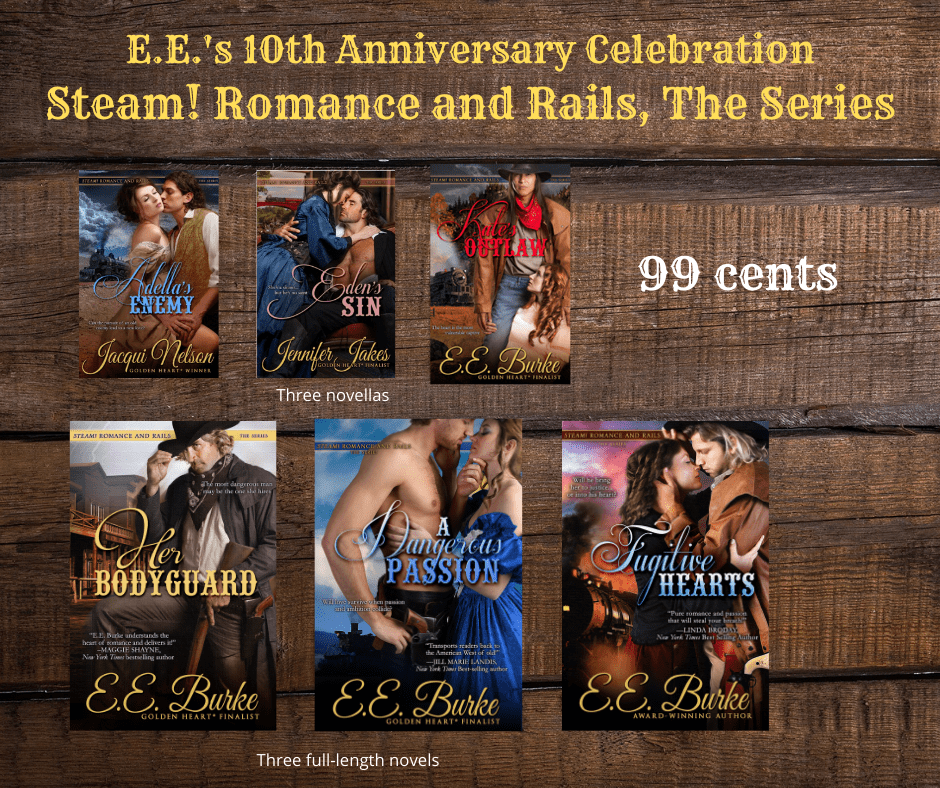 It all started with an idea and a friendship with two other 2010 Golden Heart finalists, Jacqui Nelson and Jennifer Jakes.
It all started with an idea and a friendship with two other 2010 Golden Heart finalists, Jacqui Nelson and Jennifer Jakes.


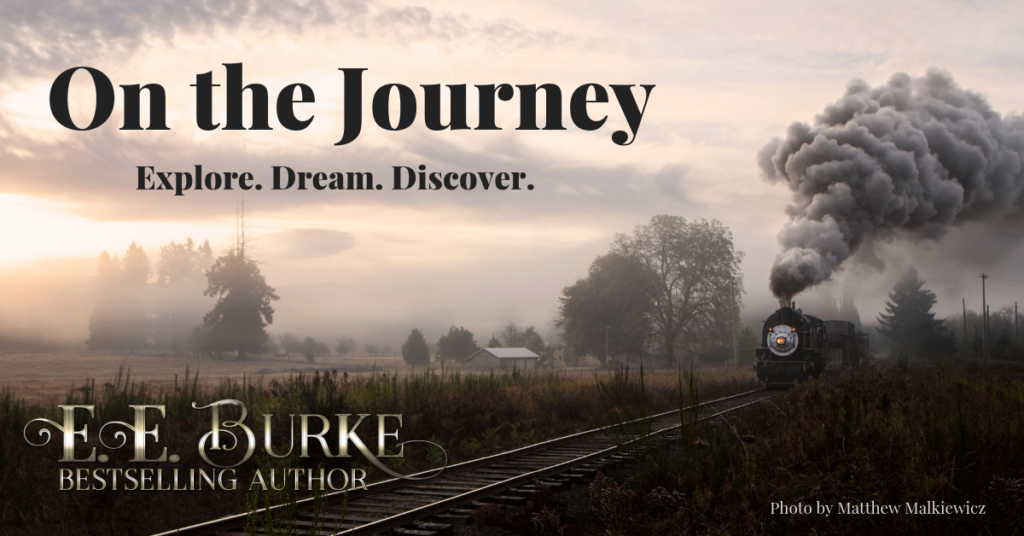
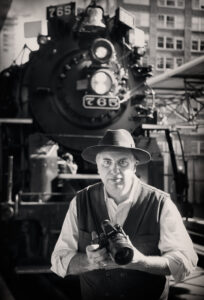

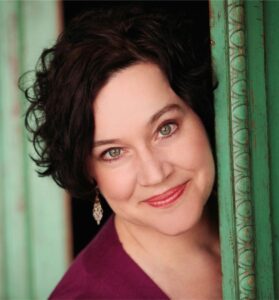 Thank you, Matthew! You and I share a love for the grand old age of steam. My historical romance novels set during this period feature many characters and events straight from pages of America’s railroad history. If you are interested in reading the Steam! Romance and Rails series or The Bride Train collection, I’ve provided a handy guide for the reading order
Thank you, Matthew! You and I share a love for the grand old age of steam. My historical romance novels set during this period feature many characters and events straight from pages of America’s railroad history. If you are interested in reading the Steam! Romance and Rails series or The Bride Train collection, I’ve provided a handy guide for the reading order 
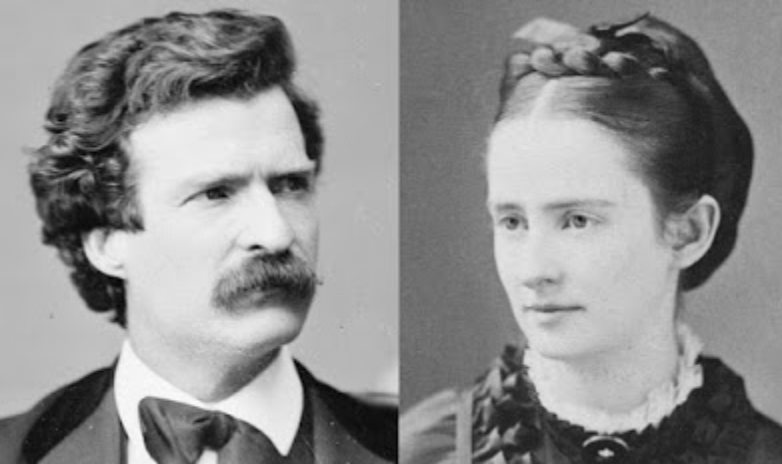
 Ever Changing Channels: The Missouri River has never liked to stay in predictable channels. According the Mark Twain’s writings, 19th century pilots on the Mississippi River could memorize that river enough to run at night. But steamboats on the Missouri River would only travel during the day when the pilots could actually observe the river because it changed so often. The course they took on the trip upriver could be entirely different from the one they encountered coming back downriver.
Ever Changing Channels: The Missouri River has never liked to stay in predictable channels. According the Mark Twain’s writings, 19th century pilots on the Mississippi River could memorize that river enough to run at night. But steamboats on the Missouri River would only travel during the day when the pilots could actually observe the river because it changed so often. The course they took on the trip upriver could be entirely different from the one they encountered coming back downriver. Spilling over its banks: This aerial photo from KMBC-News in Kansas City shows historic flooding in Platte County, MO (about a half hour north of where I live). While doing research for Taming Huck Finn, I read about a famed Mississippi River steamboat pilot who made one journey up the Missouri River in the early 1870s, and declared he would never do it again. He said only a madman would attempt to pilot such a wild, unpredictable river. It sounded to me like the kind the river that would appeal to Huck Finn.
Spilling over its banks: This aerial photo from KMBC-News in Kansas City shows historic flooding in Platte County, MO (about a half hour north of where I live). While doing research for Taming Huck Finn, I read about a famed Mississippi River steamboat pilot who made one journey up the Missouri River in the early 1870s, and declared he would never do it again. He said only a madman would attempt to pilot such a wild, unpredictable river. It sounded to me like the kind the river that would appeal to Huck Finn. Embark on a new adventure with an old friend
Embark on a new adventure with an old friend In those days, it took nerves of steel to pilot a steamboat on the wild, untamed Missouri River. A few of the things steamboat pilots encountered: elusive, ill-defined and ever-changing channels, getting stranded in low water, innumerable and often invisible snags, whirlpools, Indian attacks–to name but a few.
In those days, it took nerves of steel to pilot a steamboat on the wild, untamed Missouri River. A few of the things steamboat pilots encountered: elusive, ill-defined and ever-changing channels, getting stranded in low water, innumerable and often invisible snags, whirlpools, Indian attacks–to name but a few. Near Kansas City, a construction company dug up a steamboat from the 1850s out of a farm field (the river had long since changed course). While there were no human casualties, the boat went down with its entire load of supplies. The
Near Kansas City, a construction company dug up a steamboat from the 1850s out of a farm field (the river had long since changed course). While there were no human casualties, the boat went down with its entire load of supplies. The 




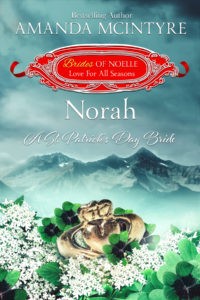 NORAH by Amanda McIntyre
NORAH by Amanda McIntyre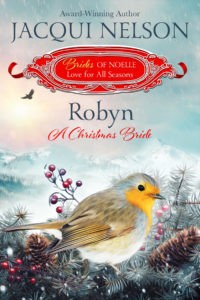 ROBYN by Jacqui Nelson
ROBYN by Jacqui Nelson


 I’m delighted to announce that USA Today Bestselling Author
I’m delighted to announce that USA Today Bestselling Author 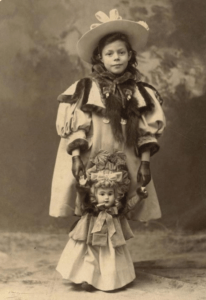
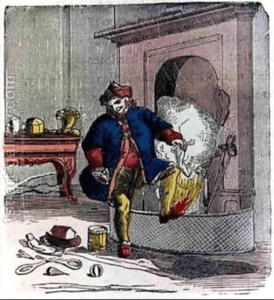
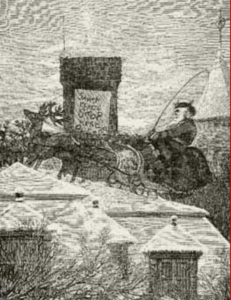 In 1823, an anonymous poem (later acknowledged to have been penned by Clement Clarke Moore, an Episcopal minister), gave us a mythical, mischievous Santa. Entitled “An Account of a Visit from St. Nicholas” or “The Night Before Christmas.” Moore’s poem is largely responsible for the image of Santa Claus as a “right jolly old elf” with a portly figure and the supernatural ability to ascend a chimney with a mere nod of his head. This is also where we pick up flying reindeer and Santa’s sleigh.
In 1823, an anonymous poem (later acknowledged to have been penned by Clement Clarke Moore, an Episcopal minister), gave us a mythical, mischievous Santa. Entitled “An Account of a Visit from St. Nicholas” or “The Night Before Christmas.” Moore’s poem is largely responsible for the image of Santa Claus as a “right jolly old elf” with a portly figure and the supernatural ability to ascend a chimney with a mere nod of his head. This is also where we pick up flying reindeer and Santa’s sleigh.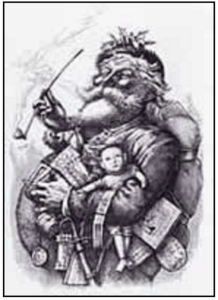 Department store Santa’s popped up at the end of the 19th century and early 20th century.
Department store Santa’s popped up at the end of the 19th century and early 20th century.